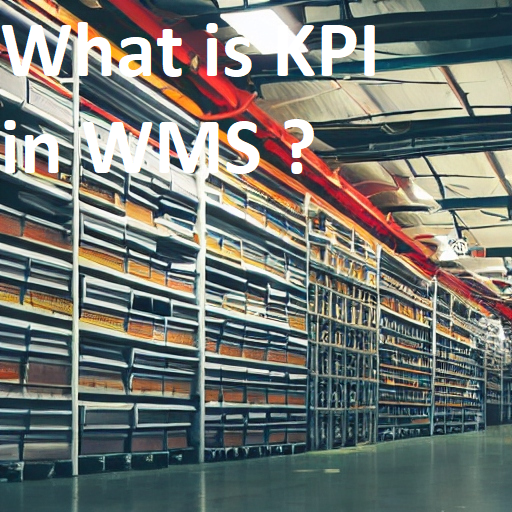KPI stands for Key Performance Indicator in WMS, which stands for Warehouse Management System. KPIs are metrics that are used to evaluate the performance of a warehouse and are important for measuring the effectiveness and efficiency of warehouse operations. KPIs provide insights into how well a warehouse is performing, and can be used to identify areas for improvement and make data-driven decisions.what is the difference between ERP and WMS ?
Some examples of KPIs in WMS include:what is the difference between ERP and WMS ?
Order fulfillment rate: This measures the percentage of customer orders that are fulfilled on time and in full.what is the difference between ERP and WMS ?
Inventory accuracy: This measures how well the inventory levels in the warehouse match the actual inventory levels.what is the difference between ERP and WMS ?
Cycle time: This measures the time it takes for a product to move through the warehouse, from receiving to shipping.what is the difference between ERP and WMS ?
Order lead time: This measures the time it takes to process and fulfill a customer order.
Order accuracy rate: This measures the percentage of orders that are fulfilled accurately, without errors or mistakes.what is the difference between ERP and WMS ?
Overall, KPIs are an important tool for warehouse managers to measure and track their performance, and to identify areas where improvements can be made to enhance the efficiency and effectiveness of their warehouse operations.what is the difference between ERP and WMS ?
Sure, let me explain in more detail what KPIs are in WMS and why they are important.
KPIs are a set of quantifiable metrics that measure the performance of a warehouse management system. They help warehouse managers to evaluate the success of their operations and identify areas for improvement. By tracking KPIs, warehouse managers can determine whether they are meeting their targets and goals, and make data-driven decisions based on actual performance data.what is the difference between ERP and WMS ?
There are various KPIs that can be used to measure the performance of a WMS, and they can be divided into several categories. Here are some examples:
Customer service KPIs: These measure the effectiveness of the warehouse in meeting customer demand. Examples include order fulfillment rate, order accuracy rate, and order lead time.
Inventory management KPIs: These measure the efficiency and accuracy of inventory management. Examples include inventory accuracy rate, stock turnover rate, and carrying cost of inventory.
Operational efficiency KPIs: These measure the efficiency of warehouse operations. Examples include picking productivity, putaway time, and order cycle time.
Financial KPIs: These measure the financial performance of the warehouse. Examples include cost per order, gross margin, and return on investment.what is the difference between ERP and WMS ?
By monitoring KPIs, warehouse managers can identify areas for improvement and implement corrective actions. For example, if the order fulfillment rate is low, managers can investigate the root cause of the problem, such as inaccurate inventory counts or inefficient picking processes. By addressing the underlying issues, managers can improve the performance of the warehouse and meet their targets and goals.
In summary, KPIs are important in WMS because they provide warehouse managers with a tool to measure and evaluate performance, identify areas for improvement, and make data-driven decisions. By tracking KPIs, managers can optimize warehouse operations, improve customer service, and achieve their business goals.
KPIs are a set of quantifiable metrics that measure the performance of a warehouse management system. They help warehouse managers to evaluate the success of their operations and identify areas for improvement. By tracking KPIs, warehouse managers can determine whether they are meeting their targets and goals, and make data-driven decisions based on actual performance data.
There are various KPIs that can be used to measure the performance of a WMS, and they can be divided into several categories. Here are some examples:
Customer service KPIs: These measure the effectiveness of the warehouse in meeting customer demand. Examples include order fulfillment rate, order accuracy rate, and order lead time.
Inventory management KPIs: These measure the efficiency and accuracy of inventory management. Examples include inventory accuracy rate, stock turnover rate, and carrying cost of inventory.
Operational efficiency KPIs: These measure the efficiency of warehouse operations. Examples include picking productivity, putaway time, and order cycle time.
Financial KPIs: These measure the financial performance of the warehouse. Examples include cost per order, gross margin, and return on investment.
By monitoring KPIs, warehouse managers can identify areas for improvement and implement corrective actions. For example, if the order fulfillment rate is low, managers can investigate the root cause of the problem, such as inaccurate inventory counts or inefficient picking processes. By addressing the underlying issues, managers can improve the performance of the warehouse and meet their targets and goals.
In summary, KPIs are important in WMS because they provide warehouse managers with a tool to measure and evaluate performance, identify areas for improvement, and make data-driven decisions. By tracking KPIs, managers can optimize warehouse operations, improve customer service, and achieve their business goals.what is the difference between ERP and WMS ?

